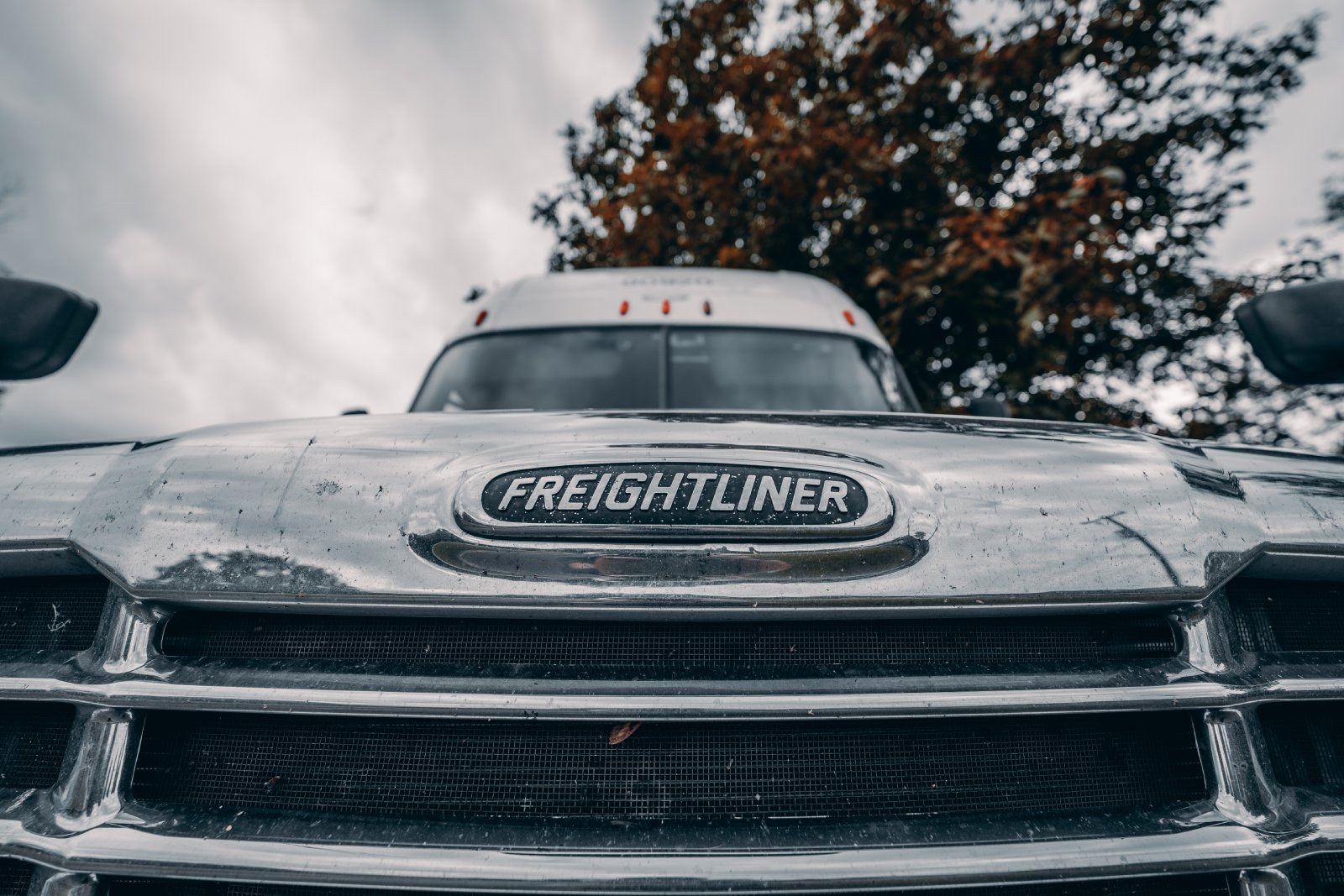As the world tackles eco-challenges, hybrids and electric vehicles have become a leading market. But how does the future hold up for decarbonizing long-hauls? The challenges are real, and here’s the story for U.S. heavy-duty trucks.
The Future Is Bright

Image Credit: Shutterstock / WR7
Various companies in logistics and freight are considering electric vehicles to reduce their carbon footprint. The future looks bright, with many EV manufacturers available and capable of building EVs and hybrid variations of trucks. However, the task is a mammoth one.
Keeping up With Cars

Image Credit: Shutterstock / Halfpoint
Regular-sized and weight vehicles transition easily from carbon to electric or hybrid. However, heavier vehicles like long-hauls might face extra challenges, but the transition is necessary to reduce the carbon impact on the environment.
Kicking off With a Giant

Image Credit: Shutterstock / Pressmaster
According to Time.com, Amazon’s venture is to roll out 10,000 U.S. electric vehicle delivery transportation within their logistics.
Rivian the Choice for Amazon

Image Credit: Shutterstock / Tada Images
Reports also said Amazon chose Rivian as their choice of EV delivery vans. The 10,000 delivery vans will be part of the company’s 100,000 EV delivery fleet goal by 2030.
Who Is Rivian?

Image Credit: Shutterstock / James Yarbrough
Rivain is an American electric car manufacturer established in 2009. The company says,”… it’s about people coming together with one mission in mind. To protect the planet and its cultures for generations to come.”
Walmart’s Project To Reduce Carbon

Image Credit: Shutterstock / Lester Balajadia
Walmart has also voiced its plans to reduce the carbon footprint of its heavy-haul vehicles for deliveries across the country. According to Time, Walmart is considering decarbonizing all their trucks by 2040.
Walmart’s Choice of EV Manufacturer

Image Credit: Shutterstock / Luis-Fernandez
Walmart is reportedly going with eCascadia trucks manufactured by Freightliner, Daimler’s subsidiary. Freightliner specializes in manufacturing long-haul trucks and workhorses. The company has been in business since 1929, and its eCascadia range is the electric variations of their vehicles.
A Significant Challenge

Image Credit: Shutterstock / Salivanchuk Semen
Lewis Fulton, the director of the energy futures program at the Institute of Transportation Studies and the University of California-Davis, said that converting carbon to EV is going to be challenging.
Trucks Are Harder To Convert Than Cars

Image Credit: Shutterstock / Gorodenkoff
According to Time reports, Lew Fulton said there are challenges to converting carbon trucks to EVs. One is the amount of miles they can get in one charge. Compared to a car, the EV truck won’t be able to get the same number of miles on one charge.
Trucks Need Several Charges Between Destinations

Image Credit: Shutterstock / VanderWolf Images
An electric truck would need you “to charge them a couple of times… It’s lost time,” Fulton said. Fulton shared an example of Rivian trucks having a range of up to 400 miles when the batteries are charged full.
Driving Range Ability Depends on the Battery

Image Credit: Shutterstock / AlinStock
The driving range depends on the type of battery installed. An overnight recharge, for instance, Fulton said, could do half the battery’s capacity.
Major Truck Manufacturers

Image Credit: Shutterstock / Scharfsinn
There are three major trucking manufacturers in America: Daimler, Navistar, and Volvo. These companies are also reportedly putting their heads together to create an energy-saving system for their long-haul vehicles.
Charging Stations for Large Trucks

Image Credit: Shutterstock / Scharfsinn
Time has reported that by 2030, at least 600,000 charging stations for long-haul trucks must be installed and fully functioning. While this is a challenging goal, it’s one prominent trucking companies are working on.
Hydrogen Fuel Cells

Image Credit: Shutterstock / Scharfsinn
Hydrogen fuel cells create a fuel source using water, heat, and electricity. Unlike regular carbon-operated vehicles, hydrogen fuel batteries don’t emit carbon pollution. Instead, the batteries allow for a quieter engine and release water instead of carbon gases, Fulton explained.
No Recharge Needed

Image Credit: Shutterstock / Salivanchuk Semen
The Office of Energy Efficiency and Renewable Energy (EERE) explains that hydrogen fuel cells don’t need any charging. According to information from the EERE, hydrogen batteries use the same amount of water as internal combustion engines.
Load Limitations

Image Credit: Shutterstock / Scharfsinn
Apart from the distance the driver could get from charged batteries, the weight of the load carried also has restrictions. According to the Federal Highway Administration, the laws on load weight vary by state and according to deferral law. 80,000 pounds is the “gross limit.”
Axel Weight Limitations

Image Credit: Pexels / Yan Krukau
As per the Freight Management and Operations regulations, axel weights vary. The weight limitation is 35,000 on a tandem axel and 20,000 on a single axel system.
Verne Is Changing the Game

Image Credit: Shutterstock / Gorodenkoff
Verne is changing the game by creating hydrogen battery cells that support heavy-duty vehicles without the carbon emissions seen in carbon-driven vehicles. Like EV batteries, hydrogen fuel batteries don’t have moving components, leading to a quiet drive.
Zero Carbon Emissions

Image Credit: Shutterstock / NicoElNino
Verne is on a mission to put more heavy trucks on the road with lower carbon gas impact through hydrogen cell technology. Using only water, heat, and electricity makes the vehicle more energy-efficient with zero carbon emissions.
Verne CEO Speaks Hopeful Assurance

Image Credit: Shutterstock / wellphoto
Ted McKleevn, Verne’s Chief Executive and Co-founder shares positive goals. He said the company aims to ensure truckers can do a full payload, maintain their range, and refuel time competitively.
Oil Dumping Scandal Rocks Ships Heading to New Orleans

Image Credit: Shutterstock / Aerial-motion
Two shipping companies have been fined after knowingly hiding a large oil spill in the Atlantic Ocean. Oil Dumping Scandal Rocks Ships Heading to New Orleans
20 Eye-Opening Realities Facing Retiring Baby Boomers

Image Credit: Shutterstock / Jack Frog
As Baby Boomers approach retirement, the promise of leisure and security often seems unattainable. This generation faces unique challenges that could redefine retirement. Here’s a stark look at the realities shaping their outlook. 20 Eye-Opening Realities Facing Retiring Baby Boomers
Retail Apocalypse: Massive Closures Sweep Across U.S. Brands

Image Credit: Shutterstock / Tada Images
Stores across the U.S. are closing at unprecedented levels, according to new research from advisory firm Coresight Research. Read on for more information about the impact this could have on you and your communities. Retail Apocalypse: Massive Closures Sweep Across U.S. Brands
Featured Image Credit: Shutterstock / 5m3photos.


